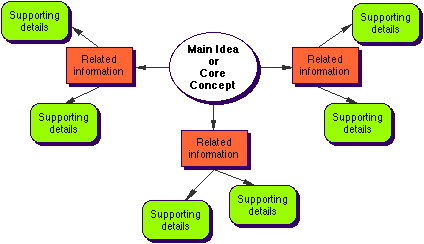During the past two decades, a constructivist approach to learning and knowledge has become dominant in educational psychology and both national and international curriculum, especially in science and primary education. Learning is viewed as an active, constructive process rather than a passive, reproductive process. However, our ways of instruction have not changed as much as our ideas which also need theoretical clarification.
Building a conceptual curriculum
To understand the PYP as a Framework one needs to seek to understand its origins, especially the social-constructivist movement’s learning theory and the influence of Jerome Bruner and David Ausubel.
Bruner was a cognitive psychologist who was highly interested the learning process. He has been acknowledged as a major supplement through his critique of Piaget’s theory of cognitive development. He tried to extend the scope of the existing theory of cognitive development by creating his “Three Modes of Representation” and pointing out the close relationship between cognitive development and theory of instruction.
Bruner’s ideas begin with his assumptions about human perception and information processing. In Bruner’s view, knowledge is organized into categories that simplify the task of processing and retaining information by allowing us to interpret the new with reference to the familiar. We can recognize instances as examples of more general categories of knowledge or events.
Three Modes of Representation:
a) Enactive mode (actions): learners acquire knowledge by action, past events and patterned motor response.
b) Iconic mode (pictures): learners perceive outside with images by using visual and other sensory organizations.
c) Symbolic mode (words and numbers): learners understand knowledge by language and reason, moreover they start trying to solve problems by thinking creatively.
Thus Bruner believes that much of the learning that is most meaningful to learners is developed through discoveries that occur during exploration motivated by curiosity. The origin of Inquiry-Based Learning lies here as we advocate instructional methods that encourage students to learn by discovery. Opportunities to manipulate objects actively and transform them through direct action are valuable for inducing and nurturing curiosity, as are activities that encourage students to search, explore, analyze, or otherwise process input rather than merely respond to it. According to Bruner such opportunities not only will increase students’ knowledge about the topic at hand but also will help them develop generalized learning-to-learn strategies useful for discovering knowledge in other situations.1 Most influential interpretation of this theory is, of course, the Spiral Curriculum and the idea that a learner doesn’t have to be ready (opposed to Piaget’s theory) to learn more complex concepts. 2
David Ausubel introduced his Meaningful Learning theory, that is concerned with how individuals learn large amounts of meaningful material from verbal/textual presentations in a school setting in early 1960’s. Like Bruner, Ausubel was clearly influenced by Piaget’s Cognitive Learning Theory and there are also similarities with Bruner’s Spiral Curriculum model, although Ausubel emphasizes that subsumption involves reorganization of existing cognitive structure, not the development of new structures as constructivist theories suggest.
With this background knowledge of the PYP Framework, what should schools do to support curriculum development and design? In my opinion, there are three clear aspects that every PYP school needs to adhere: a development of school-specific syllabus with a detailed skills continuum; both Trans- and Interdisciplinary and teacher agency over that design.
Tool to build a Conceptual Curriculum
My favorite tool to collaboratively build common understandings of concepts and curriculum are Concept Maps. Concept maps were first used by Joseph D. Novak of Cornell University in the 1960’s. As constructivist learning theory emphasizes that prior knowledge is used as a framework to learn new knowledge, it is important that all facilitators are aware connections between major and minor conceptual understanding. In essence, how we think influences how and what we learn. Concept maps identify the way we think, the way we see relationships between knowledge. Concept maps can thus illustrate faulty views individuals may have and help us better understand how students may construe meanings from the subject matter. The teacher who constructs concept maps for classes is interested in students understanding relationships between facts, not just “knowing” the facts.3
In other words, concept mapping is a tool for visualizing interrelationships between concepts in an integrated, hierarchical manner. A concept map illustrates the dynamic network of these relationships and emphasizes important domains or themes. In higher education, concept maps have already been used to organize, plan and display information for complete programmes, modules, and topics.
Step by Step Concept Mapping
I like using Lucidcharts and/or CmapTools to create my maps
- Select a drawing medium. Pick a medium in which to draw your concept map or use a Digital Platform
- Begin with a domain of knowledge that you’re very familiar with
- Write down major terms or concepts about a topic.
- Identify the most general, intermediate, and specific concepts.
- Begin drawing the concept map:
- Concepts are circled
- Place the most general concepts at the top
- Place intermediate concepts below general concepts
- Put specific concepts on bottom
- Draw lines between related concepts.
- Label the lines with linking words to indicate how the concepts are related.
- Fine-tune the map.456
This process is invaluable to any constructivist curriculum design, while it is true that it is possible for young children to be experts in some areas, such as dinosaurs (Chi & Ceci, 1978), goldfishes (Hatano & Inagaki, 1992) or computers (Hakkarainen et al., in press). However, amassing a large amount of factual knowledge, while important, is not a sufficient condition for the acquisition of expertise in any area. Instead, it is necessary for students to construct qualitative models that are essential for understanding a domain. The organization of the domain-specific knowledge base differentiates between novices and experts, and cognitive development requires the reorganization of domain-specific knowledge structures. Typical of skillful expert performance is the gradual transforming of “knowing that” into “knowing how”. Knowledge must have some personal meaning for the learner which motivates the process of transforming knowledge into expert skills. 7
How can conceptual change take place?
Like any change, it starts with a need. A need can be a result of an external or internal pressure, but it won’t be sustainable unless there is a sense of an urgency. Institutional change can happen when we feel that once we change it solves something. But how can we facilitate a paradigm shift, a shift in thinking and understanding of learning? Surely we don’t need to engage ourselves in a discussion on the theory of knowledge? Well yes, we do. We need to create an environment where we can safely build a new and common understanding together. We need to form professional learning communities that emphasize the importance of social learning experience and that are transformative. This is the only sustainable professional learning model to instigate, sustain, and institute change that will transform, not only practice, but also learning and teaching in our school.








